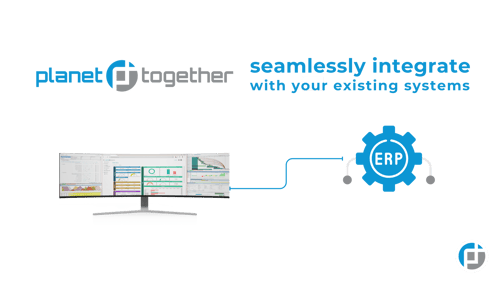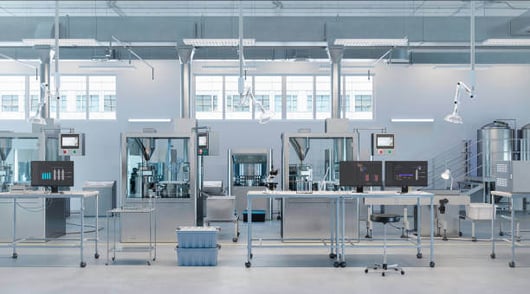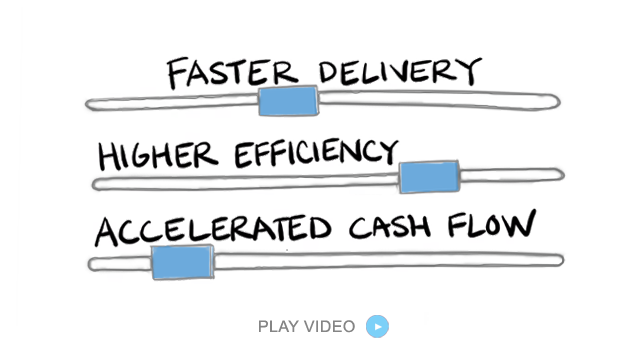Optimizing Production Processes in Medical Manufacturing: The Power of Intelligent Planning
In medical manufacturing, production planners face unique challenges. From ensuring regulatory compliance and managing high product variability to meeting precise quality standards and strict delivery timelines, the role of the production planner is as critical as it is complex. With global supply chains under strain, the demand for efficiency, agility, and accuracy in production planning has never been higher.
To thrive in this environment, optimizing production processes isn’t just a priority—it’s a necessity. This optimization is driven not only by better planning methodologies but also by the intelligent integration of Advanced Planning and Scheduling (APS) software like PlanetTogether with enterprise systems such as SAP, Oracle, Microsoft Dynamics, Kinaxis, or Aveva.
The Stakes Are Higher in Medical Manufacturing
Unlike other sectors, medical manufacturing operates under tighter regulations, shorter product lifecycles, and zero tolerance for error. Downtime, inaccurate scheduling, or a missed production window can result in delays that affect critical healthcare outcomes or lead to compliance violations with costly repercussions.
Production planners must juggle:
Stringent regulatory requirements (e.g., FDA, ISO 13485)
High-mix, low-volume production lines
Coordinating multi-site operations
Managing traceability and documentation
Dealing with supply chain volatility
Each of these challenges requires a smarter, more connected approach to production planning.

The Role of APS in Optimizing Production
PlanetTogether APS enhances production planning through constraint-based scheduling, real-time visibility, and advanced analytics. It allows planners to create dynamic schedules that reflect actual shop floor capacity, material availability, labor, and equipment constraints.
Key Benefits of PlanetTogether for Medical Manufacturing:
Capacity-Constrained Scheduling
Instead of assuming infinite capacity like many ERPs, PlanetTogether provides realistic schedules that match actual machine, labor, and tooling availability.
Real-Time Synchronization with ERP Systems
Whether integrated with SAP, Oracle, or Microsoft Dynamics, PlanetTogether pulls accurate data on inventory, work orders, and demand forecasts. This ensures that scheduling is always based on the latest information.
Regulatory Compliance Support
PlanetTogether’s traceability features help production planners ensure compliance with FDA and ISO requirements. It tracks lot numbers, material usage, and production sequences with ease.
Scenario Planning and Simulation
What if a machine goes down? What if a shipment is delayed? With PlanetTogether, you can model multiple what-if scenarios before committing to a production plan.
Improved On-Time Delivery and Throughput
By balancing load across resources and minimizing changeovers, PlanetTogether helps reduce bottlenecks, increase throughput, and improve on-time performance.

The Power of Integration: Connecting PlanetTogether with ERP Systems
The real game-changer lies in how PlanetTogether integrates with enterprise platforms like SAP, Oracle, Microsoft Dynamics, Kinaxis, and Aveva. This connection allows for data synchronization, collaborative decision-making, and automation that takes production planning to the next level.
Example: Integrating PlanetTogether with SAP
SAP might handle the creation of production orders, material master data, and procurement. But when integrated with PlanetTogether, the real-time scheduling engine takes these inputs and creates an optimal, feasible production plan based on actual capacity.
Benefits of integration include:
Automatic syncing of work orders and routings
Feedback loops for progress tracking and plan adjustments
Cross-functional visibility for operations, quality, and supply chain teams
The same applies to other systems like Oracle (e.g., NetSuite or JD Edwards), Microsoft Dynamics 365, or Kinaxis RapidResponse. With Aveva, which is known for its industrial operations and visualization capabilities, the integration supports visibility from planning down to operational execution and monitoring.
Strategies for Production Planners to Drive Optimization
If you're a Production Planner looking to optimize processes, consider these best practices:
Implement Rolling Planning Horizons
Move beyond static monthly plans. Use rolling, dynamic planning that adjusts based on real-time inputs from PlanetTogether and your ERP system.
Leverage Finite Scheduling
Ditch infinite-capacity assumptions. Use PlanetTogether to schedule only what your facility can realistically produce, considering all constraints.
Analyze Performance with KPIs
Use built-in analytics to track KPIs like schedule adherence, changeover time, and equipment utilization. This enables continuous improvement.
Adopt Collaborative Planning
Break silos between production, procurement, and quality. Shared planning tools (like those enabled through PlanetTogether integration) enhance cross-functional collaboration.
Run What-If Scenarios Before Committing
Use simulation tools in PlanetTogether to explore different scheduling options and choose the best one before pushing plans to the floor.
In medical manufacturing, every product could mean saving a life. As a production planner, your impact is enormous—and with the right tools and integrations, you can ensure that your facility not only meets expectations but exceeds them.
Are you ready to take your manufacturing operations to the next level? Contact us today to learn more about how PlanetTogether can help you achieve your goals and drive success in your industry.
Topics: PlanetTogether Software, Integrating PlanetTogether, Scenario Planning and Simulation, Medical Manufacturing, Regulatory Compliance Support, Capacity-Constrained Scheduling, Real-Time Synchronization with ERP Systems





















LEAVE A COMMENT